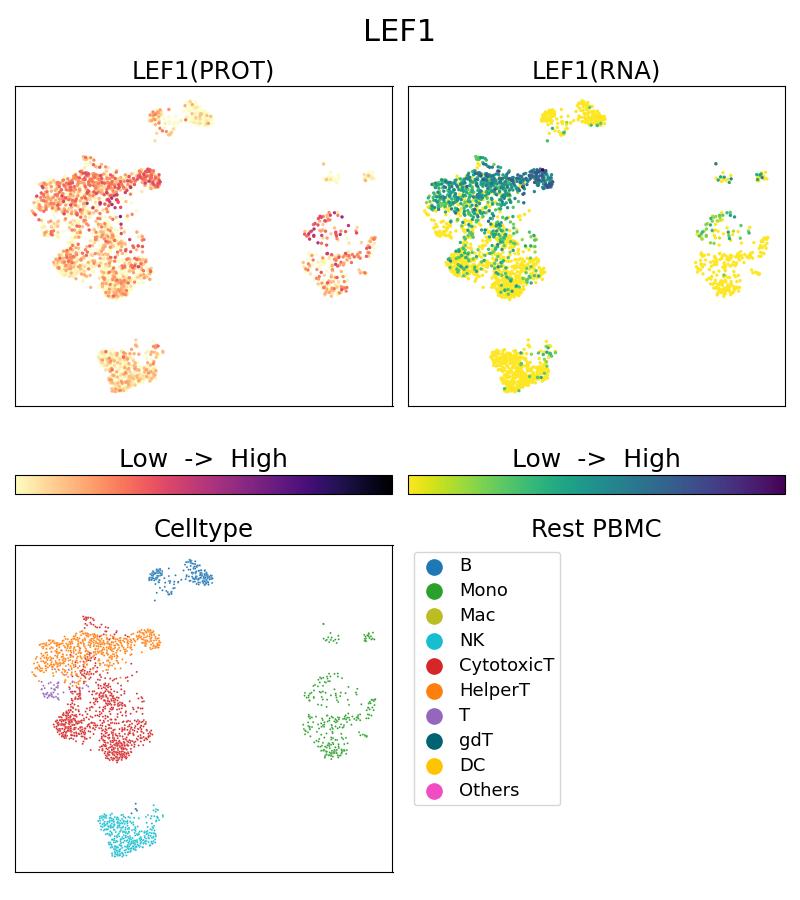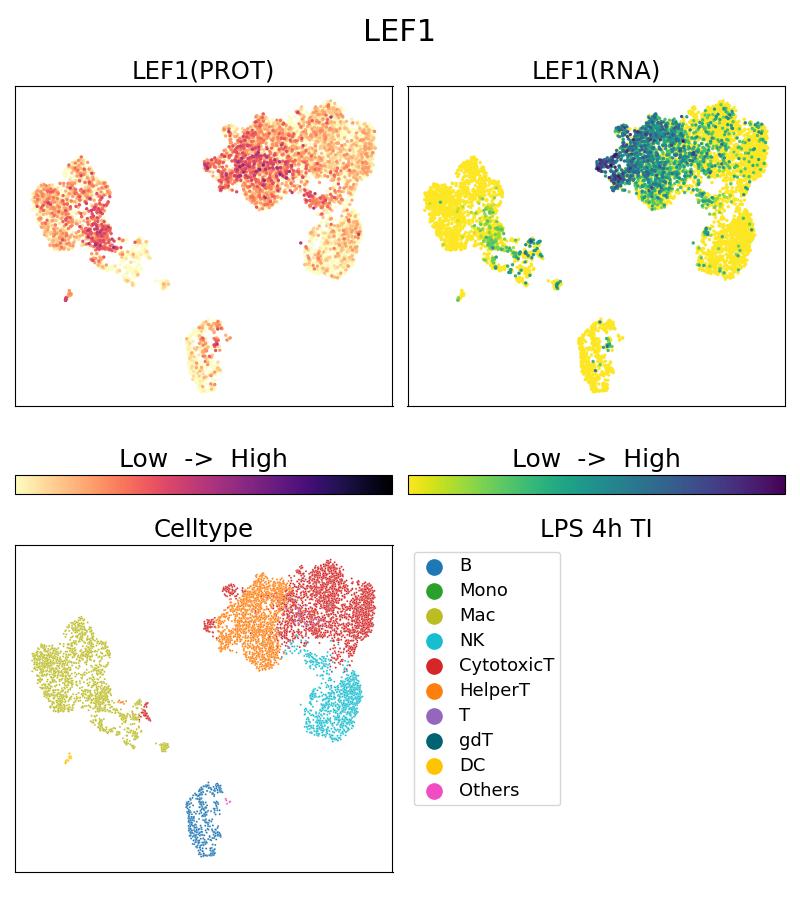Validation Data Gallery
Tested Applications
| Positive Single Cell (Intra) detected in | 10x Genomics Gene Expression Flex with Feature Barcodes and Multiplexing product. |
Recommended dilution
| Application | Dilution |
|---|---|
| SINGLE CELL (INTRA) | <0.5ug/test |
| It is recommended that this reagent should be titrated in each testing system to obtain optimal results. | |
Product Information
G14972-1-5C targets LEF1 in Single Cell (Intra) applications and shows reactivity with Human samples.
| Tested Reactivity | Human |
| Host / Isotype | Rabbit / IgG |
| Class | Oligo Conjugate |
| Type | Polyclonal |
| Immunogen | LEF1 fusion protein Ag6882 相同性解析による交差性が予測される生物種 |
| Full Name | MultiPro® 5CFLX Anti-Human LEF1 (Polyclonal) |
| Calculated molecular weight | 37 kDa |
| GenBank accession number | BC050632 |
| Gene Symbol | LEF1 |
| Gene ID (NCBI) | 51176 |
| ENSEMBL Gene ID | ENSG00000138795 |
| RRID | AB_3673889 |
| Conjugate | 5CFLX |
| Full Oligo Sequence | CGGAGATGTGTATAAGAGACAGCATACAGGCTGACAACCCATATAAGAAA |
| Barcode Sequence | CATACAGGCTGACAA |
| Form | Liquid |
| UNIPROT ID | Q9UJU2 |
| Storage Buffer | PBS with 1mM EDTA and 0.09% sodium azide , pH 7.3 |
| Storage Conditions | 2-8°C Stable for one year after shipment. |
Background Information
Lymphoid enhancer-binding factor 1(LEF1) belongs to a family of regulatory protein share homology with high mobility group protein-1, and it's a nuclear protein exprssed in pre-B and T cells. LEF1 has a role in the Wnt signaling pathway and hair cell differentiation and follicle morphogenesis. Together with CTNNB1 and EP300, LEF1 activates transcription of target genes. Isoform 5 transcriptionally activates the fibronectin promoter, binds to and represses transcription from the E-cadherin promoter in a CTNNB1-independent manner, and is involved in reducing cellular aggregation and increasing cell migration of pancreatic cancer cells. Isoform 1 transcriptionally activates MYC and CCND1 expression and enhances proliferation of pancreatic tumor cells. MECs can give rise to seven cell types of the SAE and SMGs following severe airway injury. MECs progressively adopted a basal cell phenotype on the SAE and established lasting progenitors capable of further regeneration following reinjury. MECs activate Wnt-regulated transcription factors (Lef-1/TCF7) following injury and Lef-1 induction in cultured MECs promoted transition to a basal cell phenotype. Surprisingly, dose-dependent MEC conditional activation of Lef-1in vivopromoted self-limited airway regeneration in the absence of injury. Thus, modulating the Lef-1 transcriptional program in MEC-derived progenitors may have regenerative medicine applications for lung diseases. (https://doi.org/10.1016/j.stem.2018.03.017) The phosphorylation may affects LEF1 protein's theoretical molecular weight when tested.40-70 kD bands have also been reported (PMID: 22261717; 17063141 ).
Protocols
| MultiPro™ Cell Surface and Intracellular Staining Protocol | Download protocol |
| 10x Genomics Cell Surface Protein Only Staining Protocol | Download protocol |

